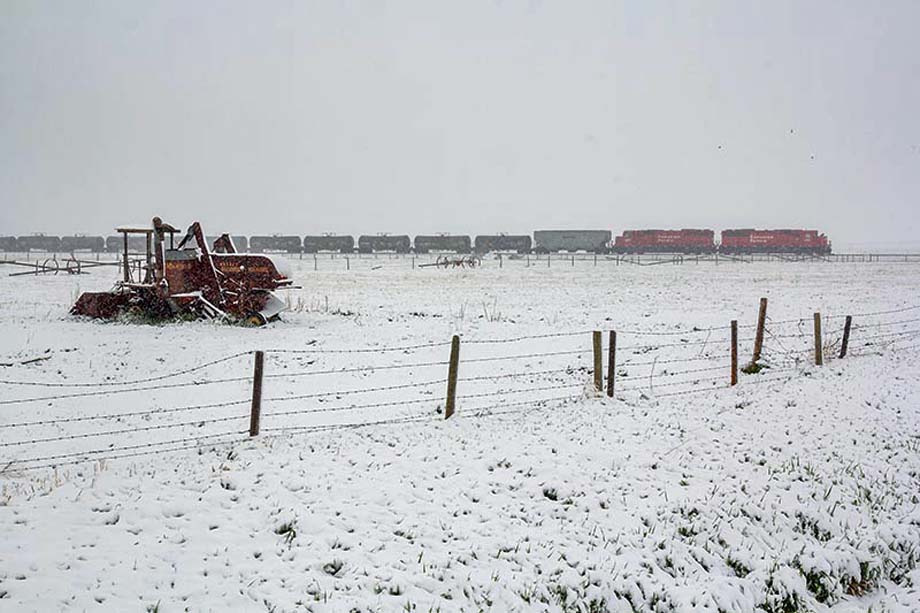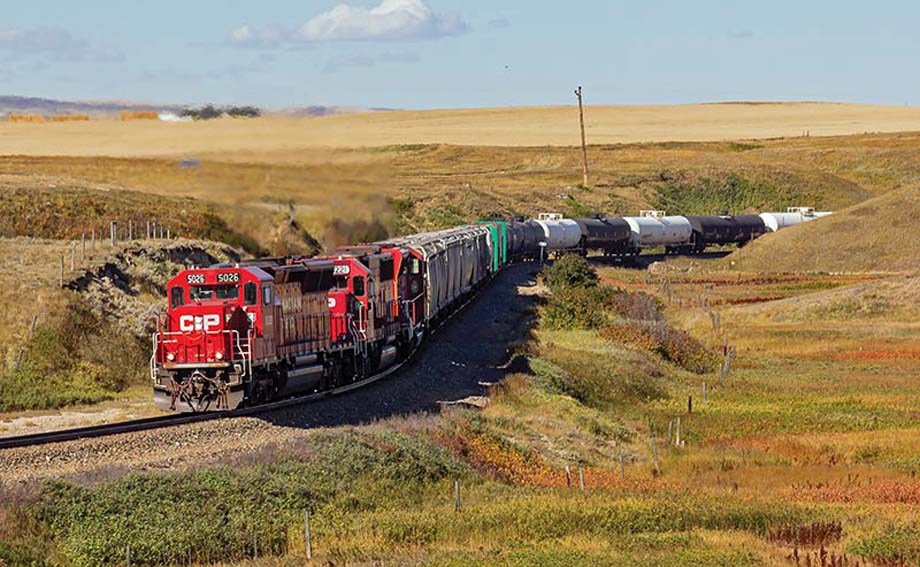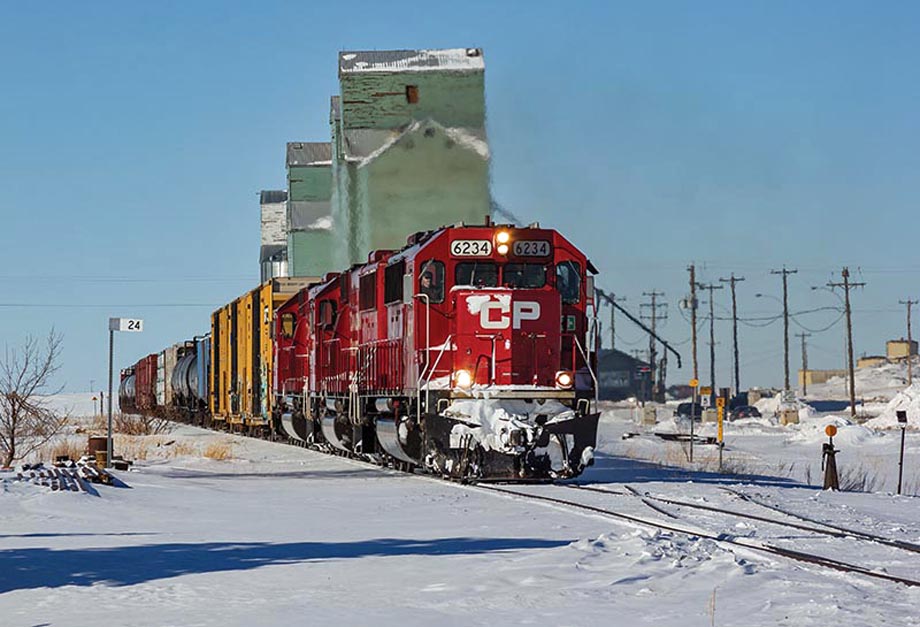
Bucklin Missouri USA
Alberta - Before our worlds were turned upside down from the pandemic and subsequent travel
restrictions, one of my annual travel destinations was Lethbridge, Alberta.
Southern Alberta has always possessed an alluring charm, from the windswept fields to the majestic Rocky
Mountains.
Even the gigantic windmills of Crowsnest Pass provide a unique backdrop.
It certainly does not hurt that Canadian Pacific's southern main line runs through most of this fantastic
scenery.
While many would naturally turn their attention west of Lethbridge to CP's often-shot Crowsnest Subdivision with its
numerous stunning vistas, the eastern end of this southern main line, CP's Taber Subdivision, should not be
overlooked.
Several of my annual treks have led to fruitful chases along the Taber Sub.
Running between Lethbridge and Medicine Hat this subdivision provides a vital link between CP's Canadian and U.S.
Midwest operations as well as a connection to Union Pacific's gateway to the Pacific Northwest.
West Coast-bound export grain trains from CP's American Midwest operations cross into Canada at Portal,
North Dakota.
From there they travel northwest to CP's main line near Moose Jaw for a run west to Medicine Hat.
Potash trains destined for Terminal 6 near Portland, Oregon, and the Port of Longview, Washington, begin their westward
trek near Moose Jaw or Regina to the east.
Similarly, they will join the main line for the trip west to Medicine Hat.

Though unit grain and potash trains make up the majority of run-through traffic across the Taber Sub, there are
also daily road switchers that roam across the Taber, transferring through freight between Lethbridge and Medicine Hat
for points beyond, all while servicing online customers.
These switchers have had various designations over the last few years but their current designations are A44
(Lethbridge to Dunmore) and A45 (Dunmore to Lethbridge).
A44 is often a good morning chase as the crew is usually called in Lethbridge around or just before
daybreak.
As if the opportunity to chase an eastbound into prime morning light wasn't appealing enough, these road switchers draw
from a pool of second-generation GMD and EMD four and six-axle units.
Once the crew has finished building their train and received a brake test from the carmen at CP's Kipp yard, on the
western outskirts of Lethbridge, they're underway.
Following the Action
From Lethbridge eastward the chase is like shooting fish in a barrel.
The Taber Sub more or less parallels Crowsnest Highway 3 toward Medicine Hat.
Once through Lethbridge proper, and the many spurs and accompanying slow speeds, track speed increases.
The first location of interest is Coaldale, the old wooden elevator still stands, but it is now surrounded by modern
bins that support a robust feed trans-load business called 5 Suns.
A44 will often have work here.

Between Coaldale and Taber, the subdivision's namesake town, there are several good spots, including Tempest,
Chin, Cranford, and Barnwell.
Cranford is the only siding between Taber and Lethbridge that can hold long trains, and is a place where meets
frequently take place.
Some days, A44 will work the customers at any of these spots, but the next stop is usually Taber and the large Lantic,
Inc. (formerly Lantic & Rogers), sugar beet factory.
Taber is the next large siding capable of meets.
Lantic can produce up to 150,000 tons of sugar annually from sugar beets grown locally.
The company contracts with close to 400 local producers to allocate a certain number of acres dedicated to growing
beets.
Though CP doesn't haul sugar beets from the area anymore, it still plays an important transportation role.
The railway brings in limestone used in bleaching the beets and hauls out loaded covered hoppers of beet pulp, as well
as loaded boxcars of finished bagged sugar, often in classic Railbox boxcars.
The complete article is readable in Railfan & Railroad Magazine.
A.J. Shewan.
(likely no image with original article)
(usually because it's been seen before)
provisions in Section 29 of the
Canadian Copyright Modernization Act.

